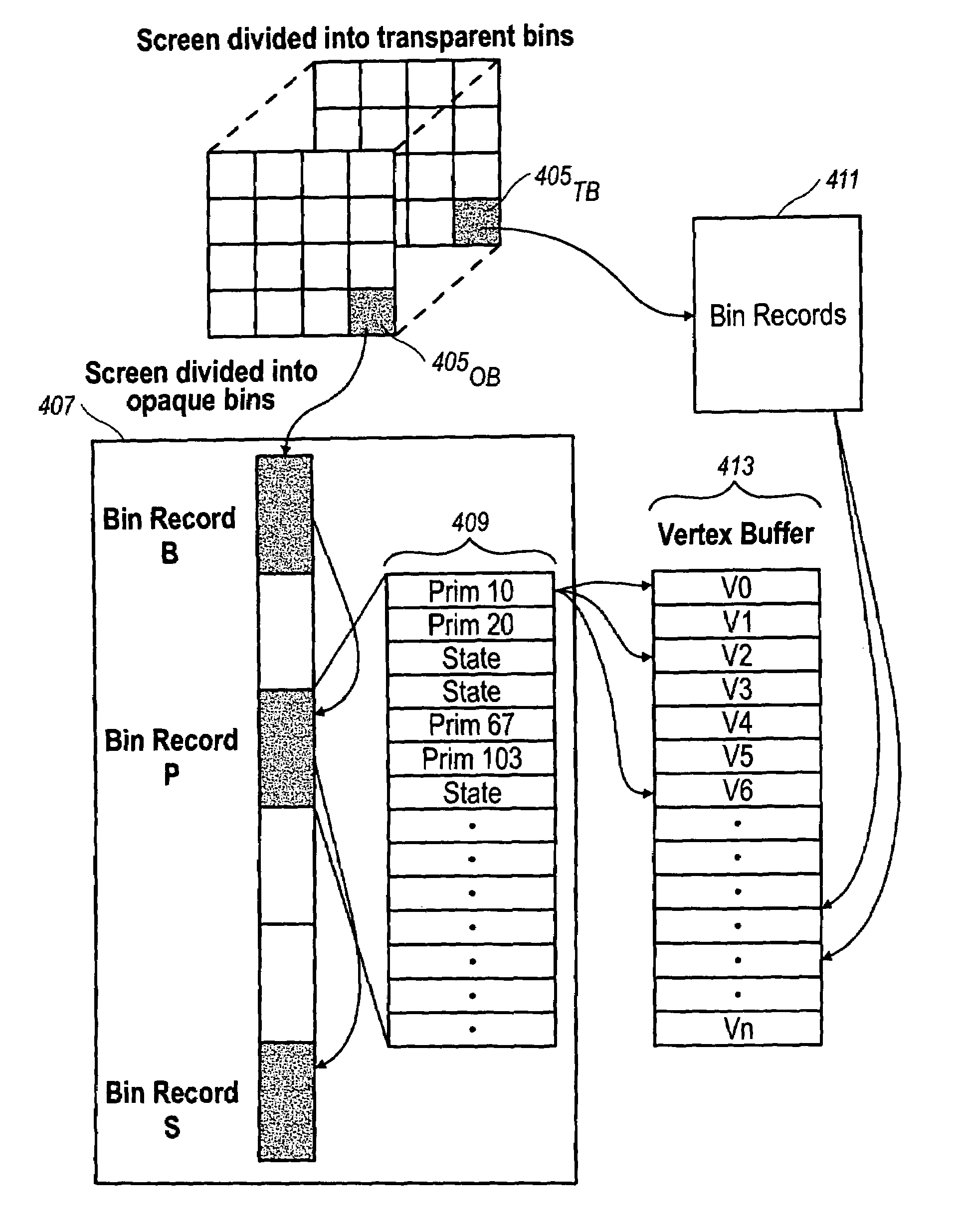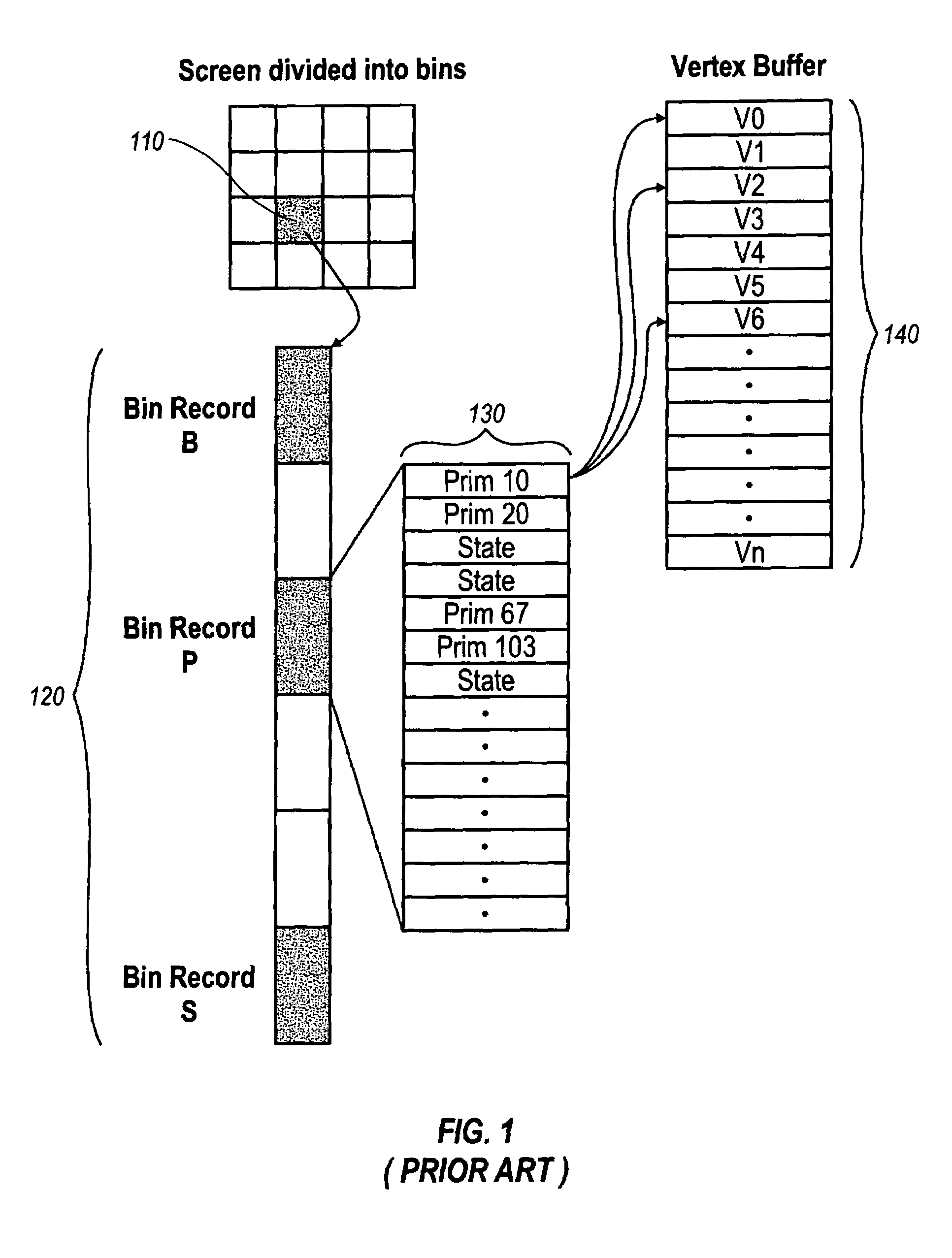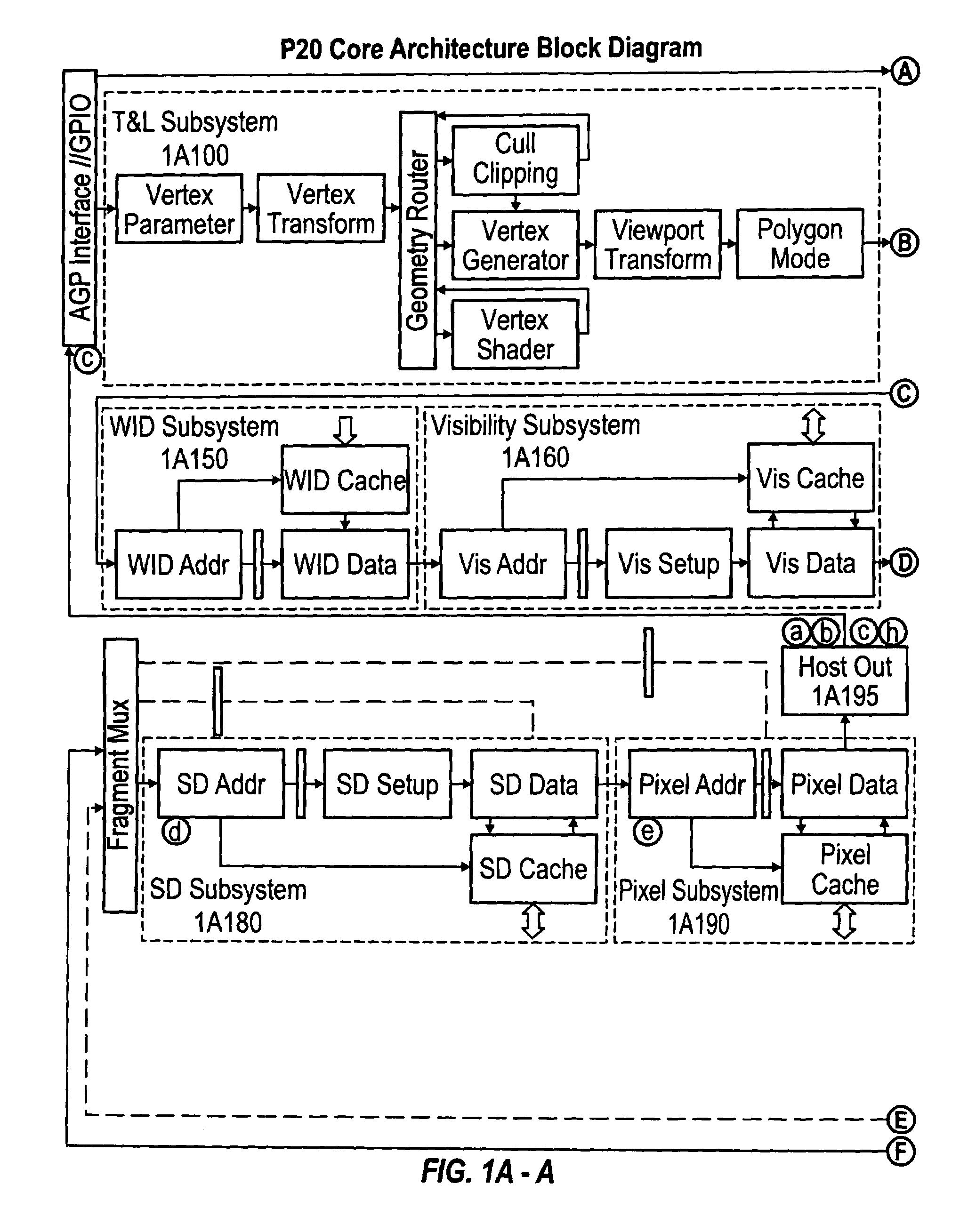Order-independent 3D graphics binning architecture
a 3d graphics and order-independent technology, applied in the field of computer graphics, can solve the problems of large data manipulation to be done, large memory bandwidth, and large geometry to be added, so as to add complexity, add visual interest to a scene, and improve frame rate
- Summary
- Abstract
- Description
- Claims
- Application Information
AI Technical Summary
Benefits of technology
Problems solved by technology
Method used
Image
Examples
Embodiment Construction
[0055]The numerous innovative teachings of the present application will be described with particular reference to the presently preferred embodiment (by way of example, and not of limitation).
[0056]Order—Independent 3D Graphics Binning Architecture
[0057]FIG. 1 depicts a screen divided into bins utilizing a conventional binning method. As shown in this figure, bin 110 holds the information for both transparent and opaque primitives. List 120 shows a sample embodiment of the bin records associated with bin 110. List 130 shows a sample embodiment of the information associated with bin record p. Vertex buffer 140 shows a sample embodiment of a vertex buffer and its correlation to the vertices associated with primitive 10 of bin record p.
[0058]FIG. 2 is a flowchart of the bin build phase of a conventional binning method. This involves waiting for a new command (step 210). Once a new command is received, the system must determine if it is a new frame that is called for (step 220).
[0059]If...
PUM
 Login to View More
Login to View More Abstract
Description
Claims
Application Information
 Login to View More
Login to View More - R&D
- Intellectual Property
- Life Sciences
- Materials
- Tech Scout
- Unparalleled Data Quality
- Higher Quality Content
- 60% Fewer Hallucinations
Browse by: Latest US Patents, China's latest patents, Technical Efficacy Thesaurus, Application Domain, Technology Topic, Popular Technical Reports.
© 2025 PatSnap. All rights reserved.Legal|Privacy policy|Modern Slavery Act Transparency Statement|Sitemap|About US| Contact US: help@patsnap.com



